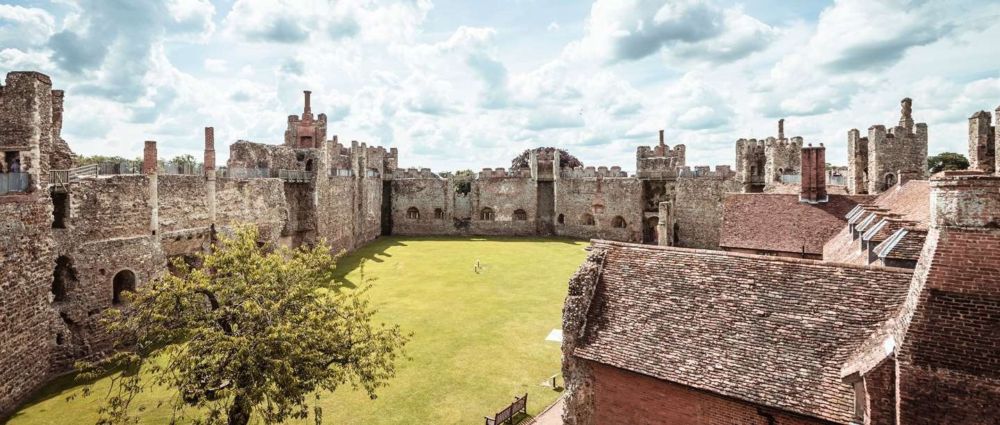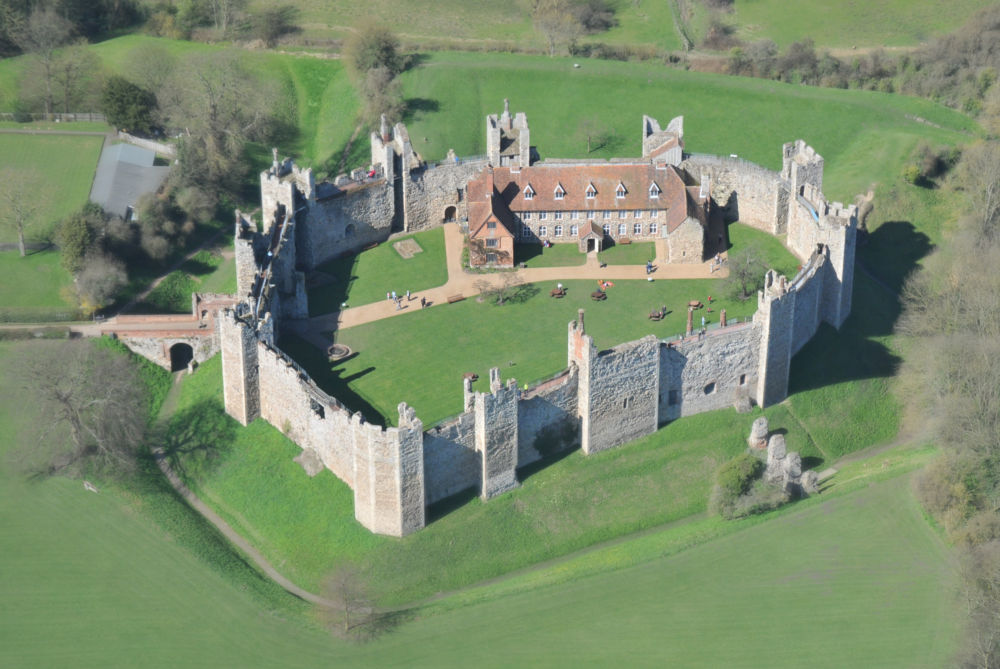Framlingham Castle in Suffolk is famous for its imposing fortified walls and for being home to, among others, Mary Tudor, known as the Bloody. Today, it is run by English Heritage and can be visited. I recommend choosing a sunny day to appreciate it at its best and to be able to picnic on the large green lawn inside the walls.
Framlingham Castle attractions
The main attraction of Framlingham Castle is the Wall Walk, a walk over its defensive walls with a breathtaking view of Suffolk countryside. To take this panoramic walk, you go up a spiral staircase, follow the circular route through the thirteen stone towers until you return to the starting point.
On the other side of the wall you can see a large marshy lake and acres of countryside with sheep and maybe some dragons. To be honest, there is no dragons, but it’s pretty easy let your imagination run wild.
Most of the internal medieval buildings have unfortunately disappeared, leaving only a late 18th century building born as a house for the poor and now used as a museum. The complex is therefore surreal, huge fortified walls with a completely bare interior and kept as an English lawn, with tables for picnic.

Long story short
Framlingham Castle stands near the Suffolk town of the same name. It was originally built by the Normans around 1148 and then destroyed by Henry II of England after the Revolt of 1173-1174.
It was then rebuilt by Roger Bigod, 1st Earl of Norfolk with an original defensive wall instead of a tower. After a few more rounds of battles it eventually became a luxurious mansion surrounded by a large park used for hunting.
Gardens and ponds were built, but in the mid-17th century the last owner Theophilus Howard, 2nd Earl of Suffolk went bankrupt and the castle was sold to Robert Hitcham, then passed to Pembroke College, Cambridge, who used it as accommodation for the poor.
Ancient buildings disappeared
The only building present within the walls of Framlingham Castle is the Poor House, built on the foundations of the medieval Great Hall. Over the years the castle has in fact gone from being a noble residence to a center where the poor from the surrounding villages lived and worked.
However, it seems that in Framlingham’s period of greatest prestige, the Tudors enlarged the original kitchen and stables from the 1300s, but nothing remains to confirm this, except for the niches and holes on the inside of the walls that must have been fireplaces or windows.
The Tudor period left only the distinctive red brick chimneys atop most of the castle towers, each with a different style and design. It seems that these fireplaces were only added to modernize and give a fashion touch to the castle because curiously no one has ever functioned as a smoke or vapor conduit.
Bloody Mary and other Framlingham Castle’s moment of fame
However, the Tudors were not only interested in design, they were also well embedded in English history, and Framlingham Castle had its higher moment of glory thanks to the Queen Mary famous for the bloodshed and for the Bloody Mary cocktail.
In fact, on the death of Edward VI in 1553, a complicated question of inheritance rights mixed with religious questions arose. Maria, not having reached London in time to assert her reasons, found herself running away from her rivals first in Ipswich and then right at Framlingham Castle which in the various changes of ownership had in the meantime arrived at the Tudor dynasty.
Surprisingly, although Maria was Catholic, the people of England had decided to support her and so she went from fugitive to be the first Queen of England in July of the same year.

About visiting Framlingham Castle
Framlingham Castle is a perfect destination to spend time outdoors with kids, as there are an amazing picnic in the area inside the walls. If you love walking or cycling, from the castle starts a very easy nice route that winds its way around and is clearly visible from the walls.
About when to go, Framlingham Castle get be very busy during Bank Holidays and it can be a good idea to book in advance. In fact there are advance tickets available online on the English Heritage website, then walk up tickets on site subject to availability.
If you’re member of the English Heritage, tickets for the castle are free and you have just to book the day of your visit. Just remember to bring your English Heritage membership card with you.
Framlingham Castle
Church St, Framlingham
Woodbridge IP13 9BP
Before leaving, share your thoughts about Framlingham Castle in the comments.

